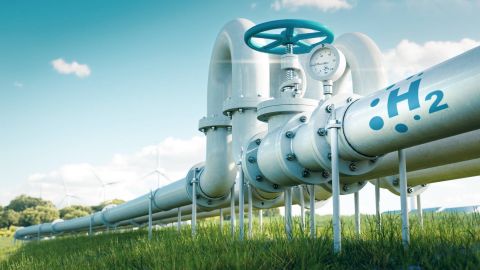Breakthrough Alert: How China’s Solar-Powered Hydrogen Revolution Is Poised to Shake Up the Global Energy Market
China has taken remarkable strides in solar-powered green hydrogen production, marked by technological innovations that push efficiency, durability, and scalability to new heights. From groundbreaking photoelectrode advancements to “artificial leaf” systems and direct hydrogen extraction from atmospheric moisture, these developments are reshaping the hydrogen economy. Underpinned by strategic government policies, abundant renewable resources, and a robust industrial base, China is rapidly positioning itself as a trailblazer in sustainable hydrogen energy. These advances not only drive cost reductions but also hold broad implications for clean energy transition and global carbon neutrality ambitions.
Breakthrough Solar Hydrogen Technologies
Chinese researchers have unveiled transformative breakthroughs in solar-driven hydrogen production. A pioneering silicon-based gallium nitride (GaN) nanowire photoelectrode, enhanced with gold nanoparticles, achieved a record solar hydrogen production efficiency of 10.36% sustained continuously for over a month and 800 hours of operation. This design significantly boosts catalytic activity and photoelectrode stability, overcoming persistent challenges of efficiency degradation and durability common to traditional technologies. Crucially, this scalable innovation lays a foundation for practical, large-scale green hydrogen manufacturing with potential mass-production viability.
Simultaneously, a Tianjin University team introduced a semi-transparent photoanode, realizing a solar-to-hydrogen (STH) conversion efficiency of 5.1% in a fully solar-powered standalone system. Their “artificial leaf” optimizes light transmission and electrical conductivity, accelerating water oxidation reactions while minimizing energy losses. This innovation paves the way for versatile applications, including integration into building facades, rooftops, and desert-based solar hydrogen plants, expanding the avenues for decentralized and aesthetically adaptable hydrogen generation.
Further material advancements enhance photocatalytic water splitting through re-engineered titanium dioxide structures with elemental substitutions. This microscopic “power plant” splits water molecules directly using sunlight, addressing electron-hole recombination issues and improving hydrogen output. Together, these novel materials augment solar utilization efficiency at the fundamental chemical level. Additionally, technologies leveraging solar or wind energy to extract hydrogen directly from atmospheric moisture have emerged. Utilizing hygroscopic electrolytes, such systems sustain electrolysis under ultra-low humidity (as low as 4%), maintaining a Faradaic efficiency near 95%. This development is pivotal for deploying green hydrogen production in arid or water-scarce regions, circumventing conventional freshwater dependency.
Strategic Policy and Resource Foundations
China’s 2025 solar hydrogen breakthroughs did not occur in isolation; they reflect the synergy of comprehensive government backing and resource advantage. The Chinese government’s “30-60” carbon peaking and neutrality targets explicitly elevate hydrogen as a core energy vector, embedding it into provincial Five-Year Plans and reclassifying it as an official energy source. This policy architecture delivers clear strategic guidance, regulatory stability, and extensive financial incentives that accelerate innovation and commercial deployment.
Moreover, China’s vast renewable energy endowment—especially solar and wind—paired with ample land in remote deserts and plateaus, enables the development of large-scale, integrated wind/solar-to-hydrogen projects. These distributed production models enhance renewable energy utilization rates and significantly reduce hydrogen production costs by tapping local resources and minimizing transmission losses. This natural resource advantage, combined with tailored renewable energy system configurations, optimizes the levelized cost of hydrogen (LCOH) at regional levels.
Industrial Ecosystem and Infrastructure Growth
Backing China’s technological and resource strengths is a formidable industrial and manufacturing base capable of rapidly scaling electrolyzer production and hydrogen infrastructure. More than 70% of global electrolyzer capacity is domestically produced in China, benefiting from economies of scale, mature supply chains, and innovation-driven cost reductions. Complemented by broad pilot programs, extensive hydrogen storage and pipeline networks, and integration initiatives ranging from off-grid microgrids to co-firing with coal plants, these efforts foster real-world testing and market readiness.
Key actors include state-owned enterprises and vibrant private sector players that collaborate to finance large-scale projects, spur R&D, and build ecosystems for hydrogen production and consumption. These cohesive efforts facilitate technology commercialization and embed hydrogen deeply within China’s broader energy infrastructure, preparing the market for accelerated adoption.
Cost-Reduction Drivers and Technology Integration
Technological innovation plays a critical role in reducing green hydrogen costs across China’s supply chain. Advances in electrolyzer technology, particularly alkaline electrolysis, have made this approach significantly more cost-competitive than proton exchange membrane (PEM) alternatives for large-scale production. China’s extensive manufacturing capacity and design improvements have driven substantial equipment cost declines.
Optimizing solar photovoltaic (PV) assets regionally alongside electrolyzers further lowers electricity expenses, the dominant cost factor in hydrogen production. Off-grid renewable hydrogen systems that combine solar, wind, electrolyzers, and energy storage secure stable supply chains at reduced costs, especially in remote locations, and contribute to near-zero carbon emissions. Additionally, material and cell design innovations, including superior catalysts and photoelectrodes, enhance solar-to-hydrogen conversion efficiency and lifetime, minimizing operational costs.
Policy-driven expansion of local manufacturing and robust SOE investments leverage scale economies, attract private sector innovation, and drive both capital and operational cost reductions. Flexible hydrogen production modalities tailored to provincial renewable profiles maximize energy efficiency while curtailing electricity expenses, aligning production with available renewable resources and grid conditions.
Conclusions and Strategic Implications for Energy Sector and Hydrogen-Fuel Research
China’s 2025 suite of solar hydrogen advancements highlights a maturing, innovation-rich ecosystem poised to lead the global green hydrogen transition. For investors, this signals opportunities in cutting-edge photoelectrochemical technologies, electrolyzer manufacturing, and integrated renewable energy-hydrogen projects. The combination of government policy, technological breakthroughs, resource abundance, and industrial scale positions China as a dominant player capable of driving down hydrogen costs and expanding market penetration globally.
